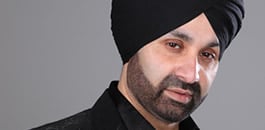women earn about 21% less than men
A report produced by the independent National Equality Panel called Anatomy of Economic Inequality in the UK, highlights major issues of inequality in the UK. The report is approved by Harriet Harman, the UK Government’s Minister for Women and Equality.
The National Equality Panel was established to record the relationships between inequalities in people’s economic outcomes such as education, earnings and wealth, and their characteristics and circumstances such as gender, age or ethnicity. The report has researched these areas in depth and presents the findings.
In Harriet Harmen’s foreword in the summary report, she points out that equality matters:
- For individuals – who deserve to be treated fairly and have the opportunity to fulfil their potential and achieve their aspirations;
- For the economy – because the economy that will succeed in the future is one that draws on the talents of all, not one which is blinkered by prejudice and marred by discrimination;
- For society – because an equal society is more cohesive and at ease with itself.
The report revealed many things that give a very interesting and in some cases shocking insight into the inequalities faced by people in the UK. It highlights that
Britain is an unequal country, more so than many other industrialised countries and more so than it was a generation ago.
The panel found that the gulf between high and low earners is bigger than in most other industrialised countries and wider than 30 years ago. Perhaps a fact not expected from thriving country such as the UK in the West.
Generally, the report found that it matters more in Britain who your parents are than in many other countries. This has a direct impact on your quality of life in the UK.

Based on these results, it is likely that women tend go on to tertiary education more than men, and are more likely to achieve good degrees of a first or upper second class classification. More women now have higher education qualifications, than men in every age group up to the age of 44, and fewer have no or only low qualifications, reversing the trend from the past, where women from older generations are not very well qualified.
However, it found that women earn about 21% less than men in terms of median hourly pay. Within women’s pay, findings state that there is almost as much inequality between well-paid and low-paid women as there is between the well-paid and the low-paid overall.
With regards to ethnic minorities in the UK, the report reveals some major facts about how inequalities are present within these groups.

Students from ethnic minority groups achieving GCSE results around or below the national median are more likely to go on to higher education compared to White British pupils with similar results. But Pakistani/Bangladeshi and Black students are less likely to pursue higher education by going to prestigious universities or getting higher class degrees.
People in the workplace from several ethnic minority groups including Indian, Chinese and Black Africans, have higher qualifications compared to the White British population.

Work wise, about 80% of Indian, White British and other White men are in paid work. About 17% of Bangladeshi men work part-time and 21% of Pakistani men are self-employed.
When looking at different religious groups within the ethnic communities in the UK, the report found that Indian Hindu and Sikh men, and Black Caribbean Christian men have similar hourly wages to White British Christian men. White Jewish men are paid 24% more. But Pakistani and Bangladeshi Muslim men and Black African Christian men earn 13-21% less than White British Christian men.

The report shows the stark differences of current living in the UK amongst the different communities. With the migration of many other ethnic communities to the UK in recent years, it will be interesting to see how further changes in inequalities present them-self in years to come.




























































